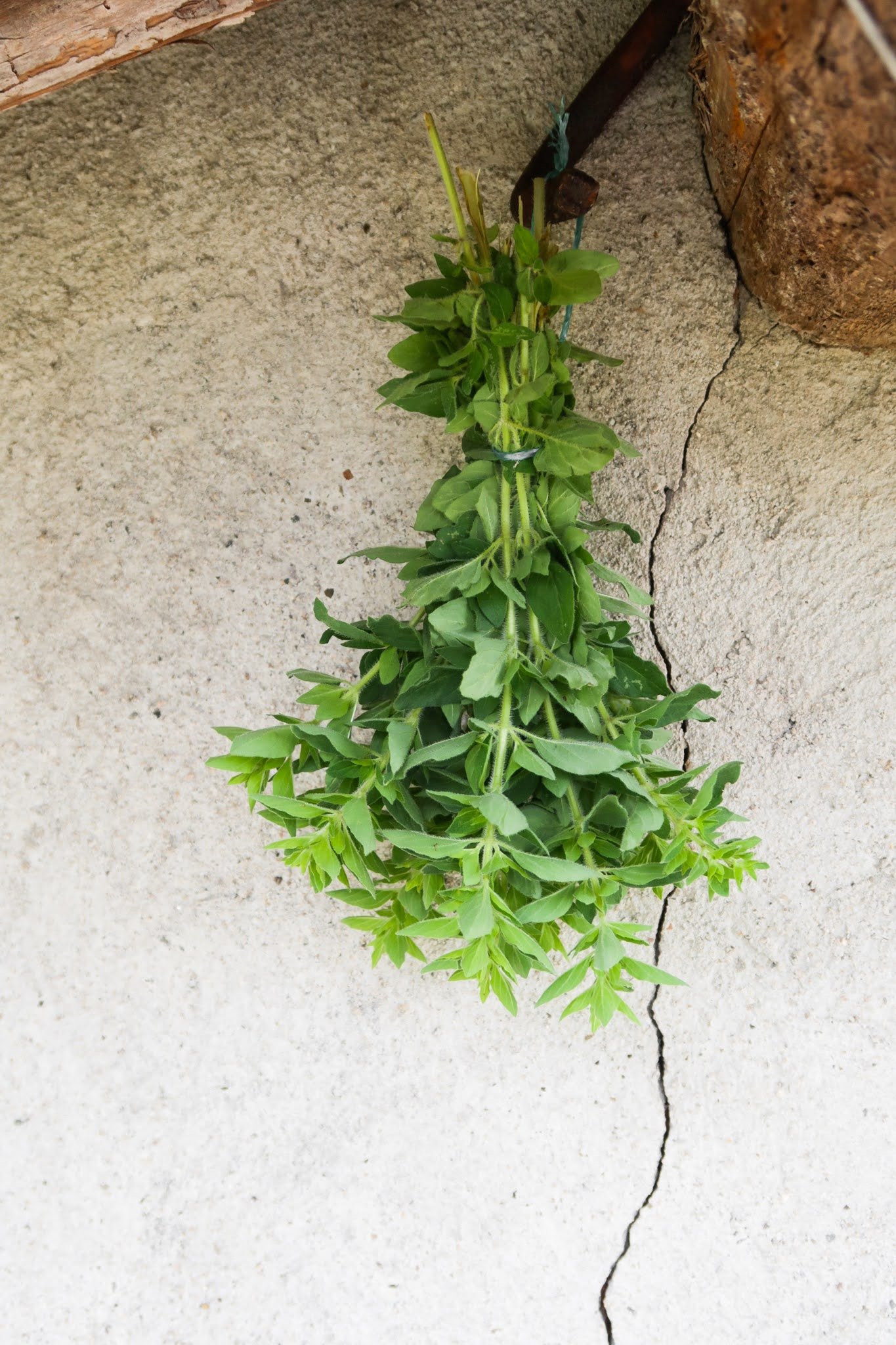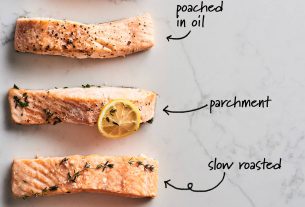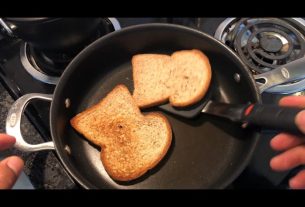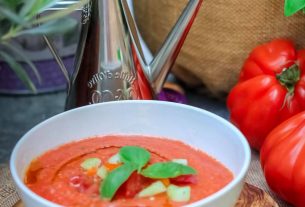Have you ever wondered how to add a burst of flavor to your dishes all year round?
Look no further than dried oregano.
Not only does it enhance the taste of your meals, but it’s also incredibly simple to dry at home.
In this article, we’ll explore three methods to dry oregano, from the convenient oven drying to the traditional air drying.
So, let’s dive in and discover the art of preserving this aromatic herb!
how to dry oregano
To dry oregano, there are three methods you can use: oven drying, food dehydrator, and air drying.
Oven drying is the quickest method, taking 1-3 hours at a temperature of 105ºF/40ºC.
Air drying is the easiest and most cost-effective, but it takes longer, about 1-2 weeks for the oregano leaves to dry completely.
For air drying, make a bundle of oregano sprigs and hang them upside down in a well-ventilated area away from sunlight.
Use paper bags to catch any loose leaves and seeds.
Once dried, you can store oregano in a clean, airtight container in a cool, dark location for up to a year.
It can be stored as whole leaves, crumbled leaves, or ground into powder depending on your preference.
Remember that dried oregano is more concentrated in flavor, so you’ll only need about 1/3 of the amount compared to fresh oregano in recipes.
Feel free to explore drying other herbs at home as well.
Key Points:
- There are three methods for drying oregano: oven drying, food dehydrator, and air drying.
- Oven drying is the quickest method, taking 1-3 hours at 105ºF/40ºC.
- Air drying is the easiest and most cost-effective, taking about 1-2 weeks for the oregano leaves to dry completely.
- To air dry oregano, make a bundle of oregano sprigs and hang them upside down in a well-ventilated area away from sunlight.
- Use paper bags to catch any loose leaves and seeds during the drying process.
- Once dried, store oregano in a clean, airtight container in a cool, dark location for up to a year.
how to dry oregano – Watch Video


Pro Tips:
1. Oregano is a member of the mint family and is actually closely related to basil and thyme.
2. Ancient Greeks believed that oregano was a symbol of joy and happiness, and it was often used in bridal wreaths.
3. Oregano contains a compound called carvacrol, which has been found to have antimicrobial properties and may help fight against bacteria and fungi.
4. In traditional medicine, oregano was used to treat respiratory problems, digestive issues, and menstrual cramps.
5. To dry oregano, you can tie a bunch of the fresh herb together with a string and hang it upside down in a warm, well-ventilated place for about two weeks. This allows the moisture to slowly evaporate, leaving behind dried oregano leaves that can be stored and used for culinary purposes.
Three Methods Of Drying Oregano
Drying fresh herbs is a fantastic way to preserve their flavor and freshness for future use. Oregano, in particular, is a popular herb known for its distinctive aroma and taste. There are three methods commonly used to dry oregano: oven drying, food dehydrator, and air drying. Each method has its advantages, but air drying is often considered the easiest and most cost-effective option.
Oven Drying Oregano
If you’re looking for a quick way to dry oregano, oven drying is the way to go. Preheat your oven to a low temperature of around 105ºF/40ºC. While this may seem low, it is important to preserve the essential oils in the herb. Spread the oregano leaves on a baking sheet and place them in the oven. Keep a close eye on them, as it usually takes 1-3 hours for the leaves to dry completely. Remember to rotate the baking sheet occasionally to ensure even drying.
Air Drying Oregano
Air drying is the most traditional and simple method of drying oregano. It requires minimal equipment and allows the herb to dry naturally over time. This method is ideal for those who have patience and don’t mind waiting for the oregano leaves to air dry fully. It can take anywhere from 1-2 weeks for the leaves to dry completely, depending on the climate and humidity in your area.
How To Air Dry Oregano
To air dry oregano, follow these steps:
- Gather a bundle of oregano sprigs.
- Tie them together with a string or rubber band, leaving space between the stems for air circulation.
- Hang the bundle upside down in a well-ventilated area, away from direct sunlight.
- This preserves the herb’s vibrant green color and flavor.
-
To prevent loose leaves and seeds from falling, you can enclose the bundle in a paper bag or cheesecloth during the drying process.
-
Gather oregano sprigs
- Tie them together
- Hang upside down in a well-ventilated area
- Avoid direct sunlight
- Enclose in a paper bag or cheesecloth
Remember to allow for air circulation and preserve the vibrant green color and flavor of the herb.
Uses For Dried Oregano
Dried oregano is an incredibly versatile herb that can be used in a wide range of dishes. It adds a robust and aromatic flavor to Lebanese Za’atar, spice blends, meat rubs, Italian dishes, soups, salads, egg dishes, meats, and even oregano tea. The possibilities are endless, and its intense flavor can elevate the taste of any recipe.
- It can be used in Lebanese Za’atar, spice blends, meat rubs, Italian dishes, soups, salads, egg dishes, meats, and even oregano tea.
- Adds a robust and aromatic flavor
- Intense flavor that can elevate the taste of any recipe.
Dried oregano is a versatile herb that can be used in numerous dishes. Its robust and aromatic flavor enhances Lebanese Za’atar, spice blends, meat rubs, Italian dishes, soups, salads, egg dishes, meats, and even oregano tea. The possibilities are endless.
Proper Storage For Dried Oregano
To ensure the long-lasting freshness of your dried oregano, proper storage is essential. After drying the herb, store it in a clean, airtight container. A glass jar with a tight-fitting lid works best for this purpose. Keep the container in a cool, dark location, away from direct sunlight and heat sources. When stored correctly, dried oregano can retain its flavor for up to a year.
Different Forms Of Dried Oregano
Dried oregano comes in three forms: whole leaves, crumbled leaves, and ground powder. Whole leaves not only add visual appeal to dishes but also provide a burst of flavor. Crumbled leaves are ideal for adding texture and can be sprinkled on top of pizzas or salads. Ground oregano has a concentrated and intense flavor, making it a great addition to sauces and stews.
Cooking With Ground Oregano
Ground oregano has a stronger flavor compared to crumbled leaves. It is perfect for cooking because it blends seamlessly with other ingredients, imparting its distinct taste throughout the dish. Whether you’re making a pasta sauce, meat marinade, or a flavorful stew, using ground oregano can add a depth of flavor that is hard to replicate with other herbs.
- Ground oregano has a stronger flavor compared to crumbled leaves
- Perfect for cooking, blends seamlessly with other ingredients
- Imparts a distinct taste throughout the dish
- Enhances the flavor of pasta sauces, meat marinades, and stews
- Difficult to replicate its depth of flavor with other herbs
Equivalent Measurement For Dried Oregano
It’s important to note that the flavor intensity of dried oregano is much greater than that of fresh oregano. As a general rule, you should use approximately one-third to one-half the amount of dried oregano compared to fresh oregano in recipes. This is because the drying process concentrates the flavors, resulting in a stronger taste. Adjust the amount according to your personal preference, keeping in mind that oregano can quickly overpower other flavors if used excessively.
- Use one-third to one-half the amount of dried oregano compared to fresh oregano.
- Drying process concentrates the flavors, resulting in a stronger taste.
- Adjust according to personal preference, as oregano can easily overpower other flavors if used excessively.
Drying Other Herbs At Home
Drying herbs at home is not limited to oregano alone. Many other herbs can be dried using similar methods. Sage, thyme, rosemary, and basil are just a few examples of herbs that can be successfully air-dried or oven-dried. The process and principles remain the same; it’s just a matter of adapting to the specific requirements of each herb. Experiment with different herbs to create your signature spice blends and enhance your culinary creations. Home-dried herbs are not only cost-effective but also add a touch of freshness and flavor to your dishes that store-bought dried herbs often lack.
Drying oregano is a simple and rewarding process that allows you to preserve the flavor and freshness of this popular herb. Whether you choose to oven dry, use a food dehydrator, or opt for the traditional air drying method, the result will be a versatile ingredient that can be used in countless recipes. With proper storage and knowledge of the various forms of dried oregano, you can confidently whip up delicious meals with a touch of Mediterranean charm. Don’t limit yourself to oregano alone; take advantage of the opportunity to dry other herbs and expand your culinary repertoire. So, go ahead, harvest that fresh oregano from your garden or pick up some vibrant bunches from the market, and start drying to enjoy the flavors of this fantastic herb year-round.

You may need to know these questions about how to dry oregano
What is the best way to dry oregano?
If you are patient enough, air drying is the optimal method to dry oregano as it preserves its flavor without the risk of diminishing it through heating. It involves hanging the oregano upside down in a cool, dry place until it becomes crispy. Nevertheless, if you prefer a quick process with satisfactory results, using a food dehydrator is a great alternative. It dries the oregano efficiently while maintaining its aromatic properties, allowing you to enjoy your dried oregano in no time.
Can you air dry oregano?
Yes, air drying oregano is a simple and effective way to preserve its flavor and aroma. After harvesting the oregano, tie it in a bundle and hang it upside down in a well-ventilated area, ensuring it is away from direct sunlight. Over the course of 1-2 weeks, the oregano leaves will dry naturally, and you will know they are ready when they crumble easily. Additionally, using a paper bag to catch any leaves or seeds that fall off during the drying process can help maintain the cleanliness of the surrounding area.
Should oregano be washed before drying?
Washing oregano before drying can be a matter of personal preference. While rinsing it under cold water can help remove any dirt or residue, some argue that it may affect the flavor and aroma of the dried herb. However, if the oregano is visibly dirty, washing it before drying can ensure a cleaner end product. Ultimately, the decision to wash oregano before drying depends on your desired outcome and the level of cleanliness you seek.
When should I dry fresh oregano?
The ideal time to dry fresh oregano is during the early to mid-May period. Harvesting too early may result in a lack of desired flavor, while waiting too long may lead to visible damages caused by four-lined plant bugs and the development of flower buds. By choosing this timeframe, you can ensure optimal flavor and preserve the beautiful foliage of the oregano plants, resulting in a delightful herb for your culinary creations.
Reference source
https://www.masterclass.com/articles/how-to-dry-oregano
https://www.foxvalleyfoodie.com/how-to-dry-oregano/
https://www.alphafoodie.com/how-to-dry-oregano/
https://www.wikihow.com/Dry-Oregano



